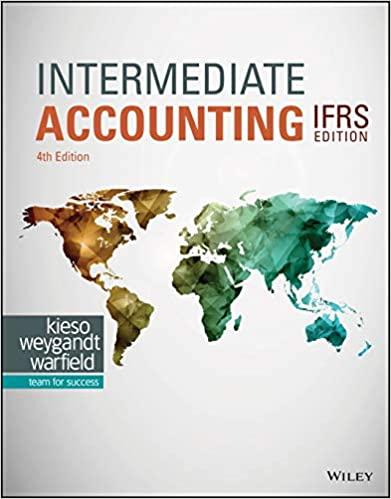Question
Scenario 1: Amount borrowed: $20,000 Date borrowed: August 2022 APR: 4% Loan type: Subsidized Stafford Loan Graduation date: May 2026 Deferment/Forgiveness: None Monthly payment: $200
Scenario 1: Amount borrowed: $20,000
Date borrowed: August 2022
APR: 4%
Loan type: Subsidized Stafford Loan
Graduation date: May 2026
Deferment/Forgiveness: None
Monthly payment: $200
Monthly interest: $67
Scenario 2: Amount borrowed: $30,000
Date borrowed: January 2020
APR: 6%
Loan type: Unsubsidized Stafford Loan
Graduation date: December 2023
Deferment/Forgiveness: None
Monthly payment: $350
Monthly interest: $150
Scenario 3: Amount borrowed: $50,000
Date borrowed: June 2023
APR: 7%
Loan type: PLUS Loan
Graduation date: May 2027
Deferment/Forgiveness: None
Monthly payment: $500
Monthly interest: $292
Scenario 4: Amount borrowed: $10,000
Date borrowed: September 2021
APR: 5%
Loan type: Private Loan Graduation
date: August 2025 Deferment/Forgiveness: None
Monthly payment: $150
Monthly interest: $42
Scenario 5: Amount borrowed: $100,000
Date borrowed: February 2022
APR: 8%
Loan type: PLUS Loan Graduation
date: January 2026
Deferment/Forgiveness: Deferment for first 6 months after graduation
Monthly payment: $1,000
Monthly interest: $667
Scenario 6: Amount borrowed: $25,000
Date borrowed: May 2020
APR: 3%
Loan type: Subsidized Stafford Loan
Graduation date: April 2024
Deferment/Forgiveness: Forgiveness through Public Service Loan Forgiveness program after 10 years of working in a qualifying public service job
Monthly payment: $200
Monthly interest: $63
- For each of the 6 scenarios, compute the amount of money that the student will owe when they start paying back the loan (after graduation, or after deferment/forbearance).If the loan is subsidized, this will be the same as the amount they borrowed. For all other loans, you will need to use the compound interest formula from class - assume that the interest is compounded daily. Show your calculations. Which student owes the most when they graduate? Was this the same student who borrowed the most money originally?
- Now we will begin paying off our loans. For each student, use the payout annuity/loan formula to find how long it will take them to pay off their student loan if they make the monthly payment you described above. Which loan takes the longest to pay off? Which one is paid off quickest? Why do you think this is?
- For each of your scenarios, re-do Problem 5, but double the amount that you pay back each month.How does this change the amount of time that it takes you to repay your loans (and don't just answer that you pay them back faster - how much faster?).
- One other option which is available after graduation - when your credit score is better - is torefinanceyour student loans at a lower rate. For each of your 6 scenarios, choose a lower interest rate and see how long it would take for the student to pay back their loan if they were able to refinance for that interest rate. Which students benefit the most from refinancing? Explain why you think this is the case.
- Student loan debt has been steadily rising for years and is widely recognized as a problem.Graduates with high student loan debt may struggle to pay bills, buy homes, or be successful in their career.Because of this, many politicians have proposed plans to change the way that student loans in the United States work.Research at least three proposals for student loan reform (be sure to cite your sources). For each proposal, describe the plan and how it would affect the 6 students you discussed in your scenarios.
Step by Step Solution
There are 3 Steps involved in it
Step: 1

Get Instant Access to Expert-Tailored Solutions
See step-by-step solutions with expert insights and AI powered tools for academic success
Step: 2

Step: 3

Ace Your Homework with AI
Get the answers you need in no time with our AI-driven, step-by-step assistance
Get Started


